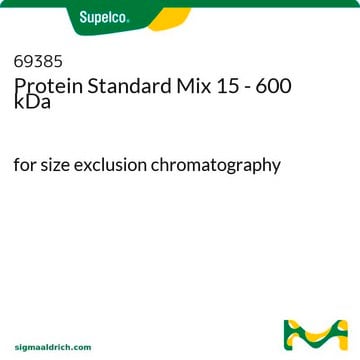N5661
Nuclease S1 from Aspergillus oryzae
for single-strand DNA/RNA digestion
Sinónimos:
Endonuclease S1
About This Item
Productos recomendados
biological source
Aspergillus sp. (A. oryzae)
form
solution
concentration
≥100000 units/mL
technique(s)
DNA purification: suitable
suitability
suitable for nucleic acid purification
application(s)
cell analysis
shipped in
wet ice
storage temp.
−20°C
¿Está buscando productos similares? Visita Guía de comparación de productos
Categorías relacionadas
General description
Application
Biochem/physiol Actions
Unit Definition
Physical form
Solo componentes del kit
- 30mM Sodium acetate .25-.25 %
- 50mM Sodium chloride .29 %
- 1mM Zinc chloride .01 %
- Glycerol 50 %
- 2mg/mL Protein .2 %
Storage Class
10 - Combustible liquids
wgk_germany
WGK 2
flash_point_f
Not applicable
flash_point_c
Not applicable
Certificados de análisis (COA)
Busque Certificados de análisis (COA) introduciendo el número de lote del producto. Los números de lote se encuentran en la etiqueta del producto después de las palabras «Lot» o «Batch»
¿Ya tiene este producto?
Encuentre la documentación para los productos que ha comprado recientemente en la Biblioteca de documentos.
Los clientes también vieron
Protocolos
Spectrophotometric assay at 260 nm measures nuclease S1 activity, vital for nucleic acid research, with defined enzyme unit criteria.
Nuestro equipo de científicos tiene experiencia en todas las áreas de investigación: Ciencias de la vida, Ciencia de los materiales, Síntesis química, Cromatografía, Analítica y muchas otras.
Póngase en contacto con el Servicio técnico











